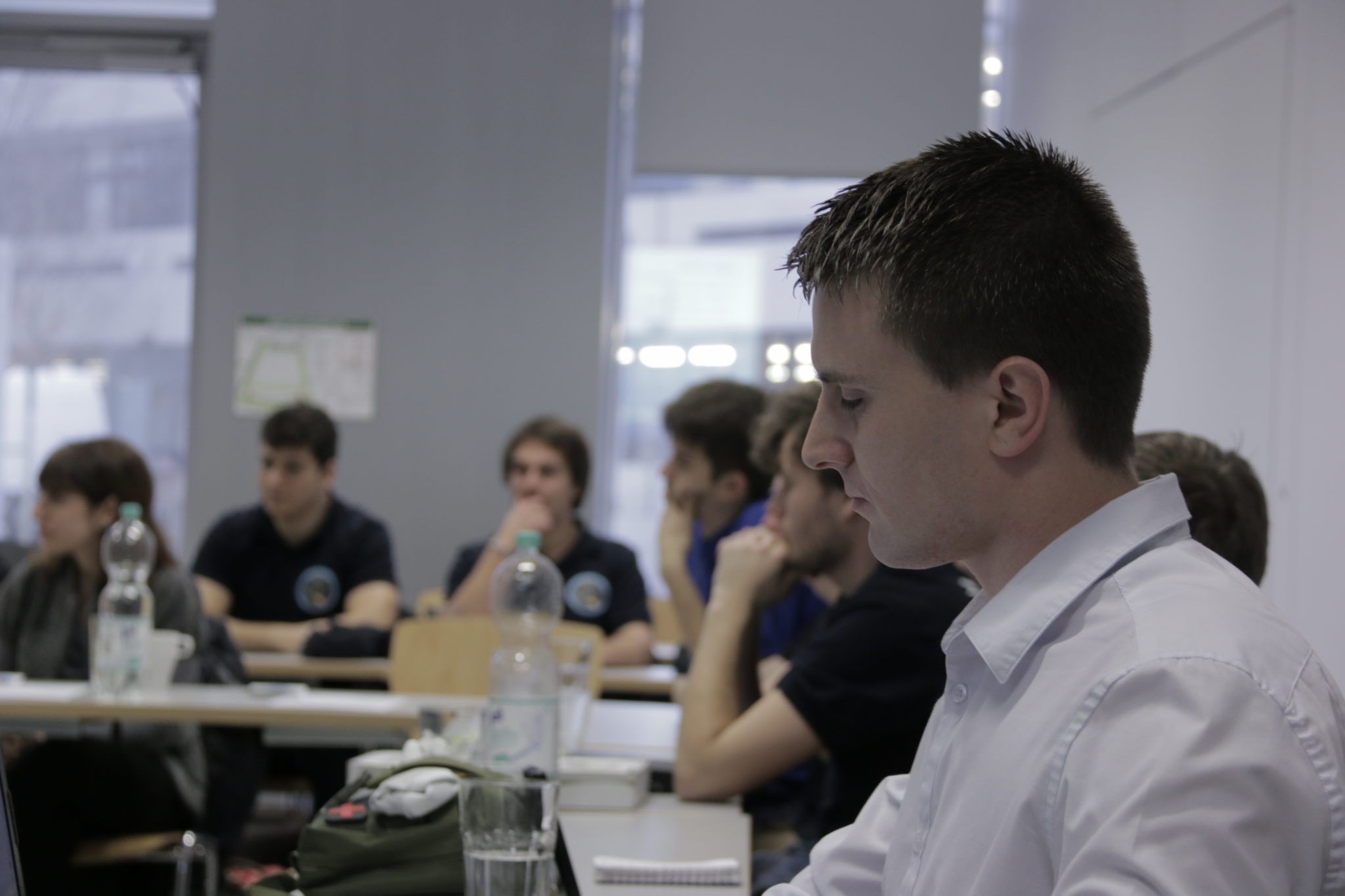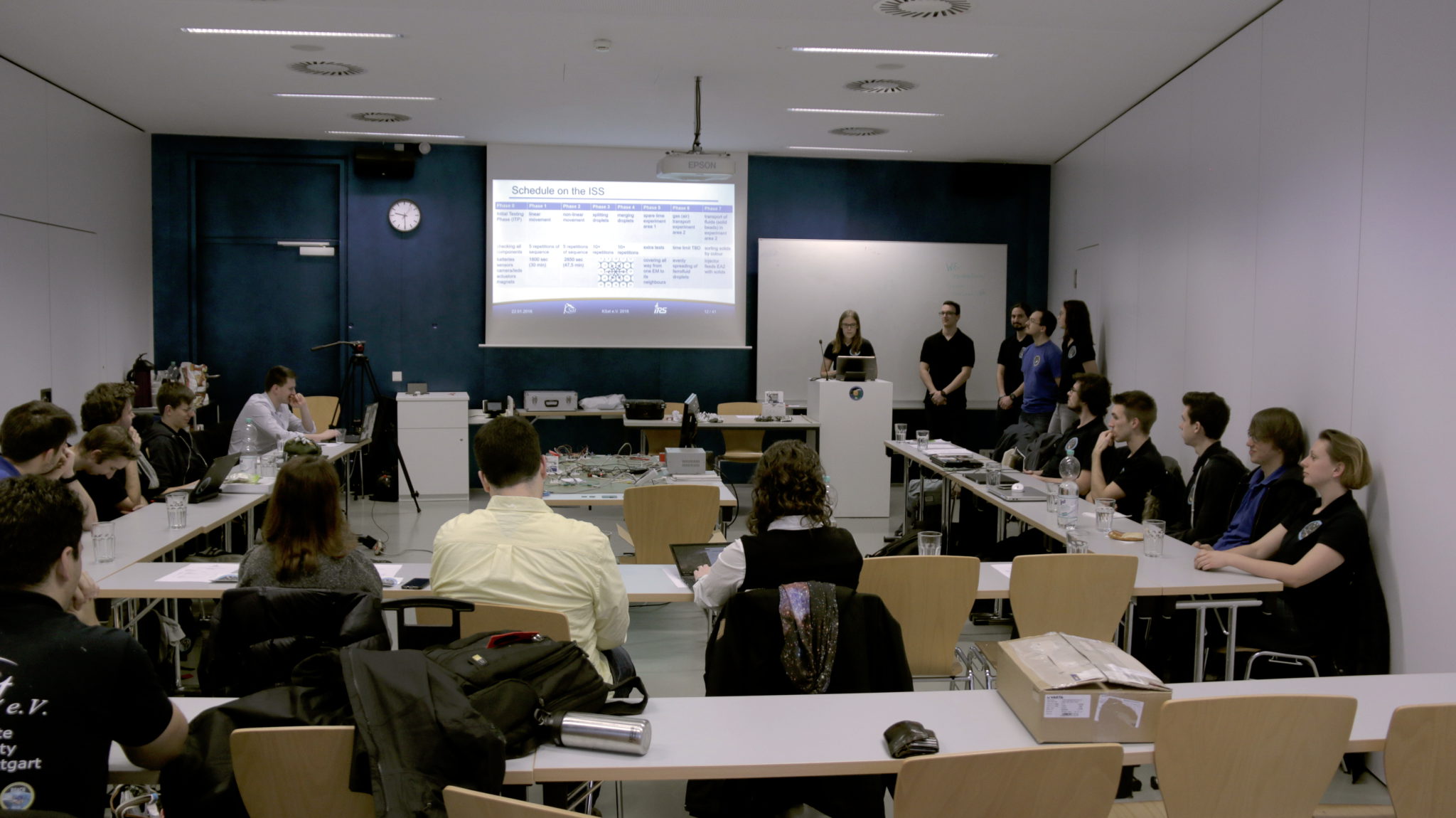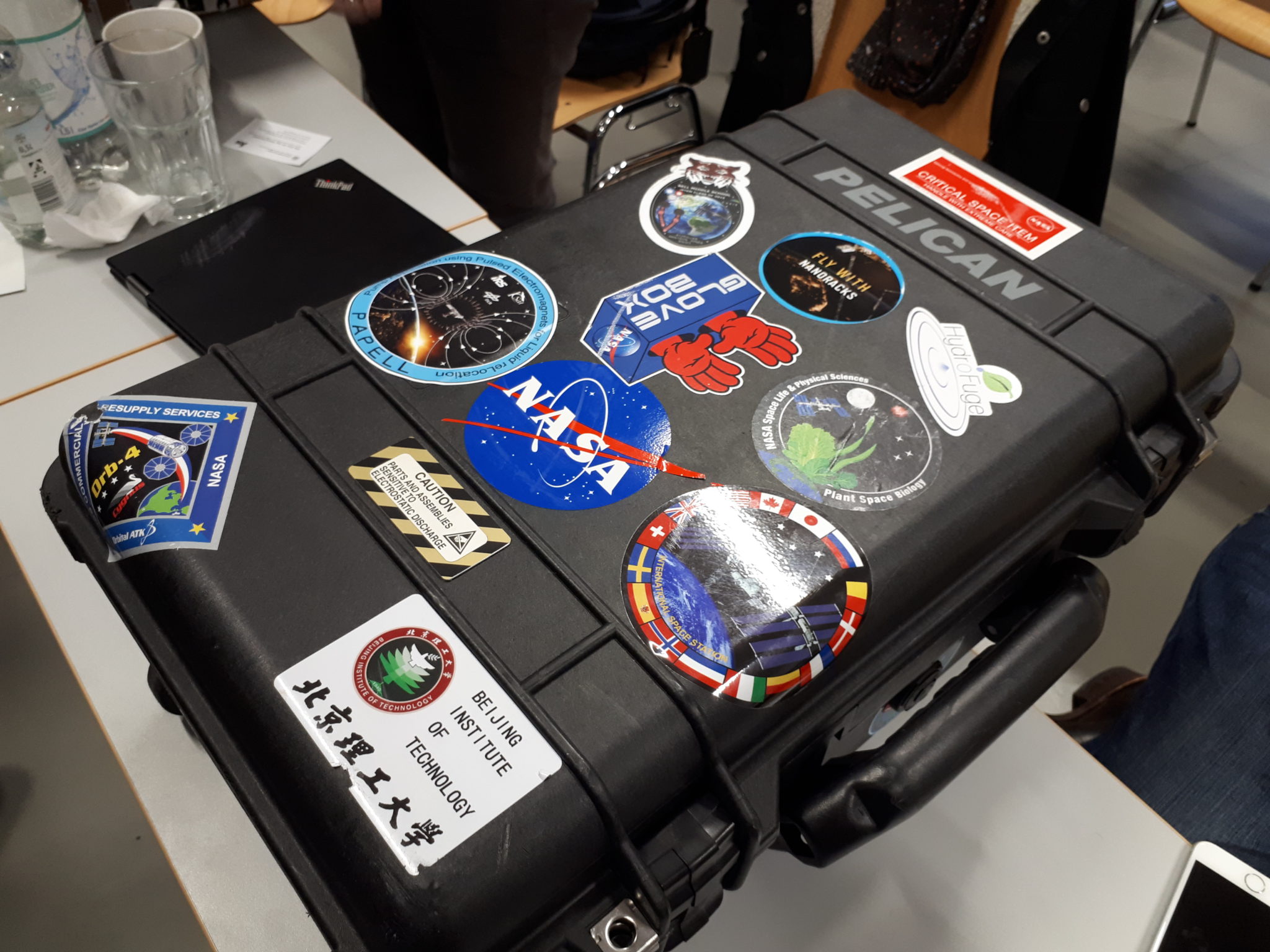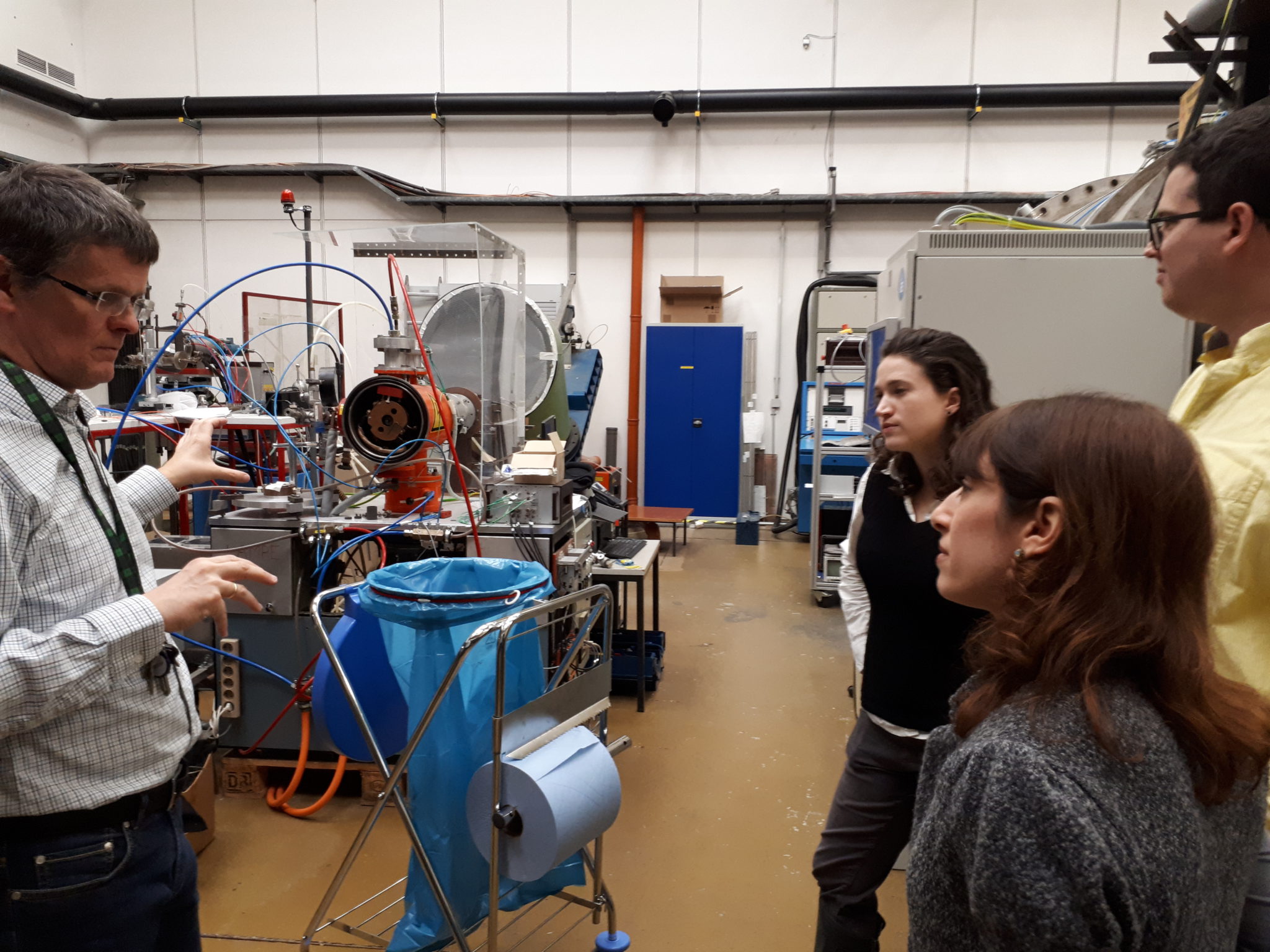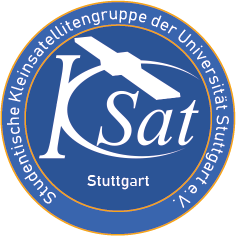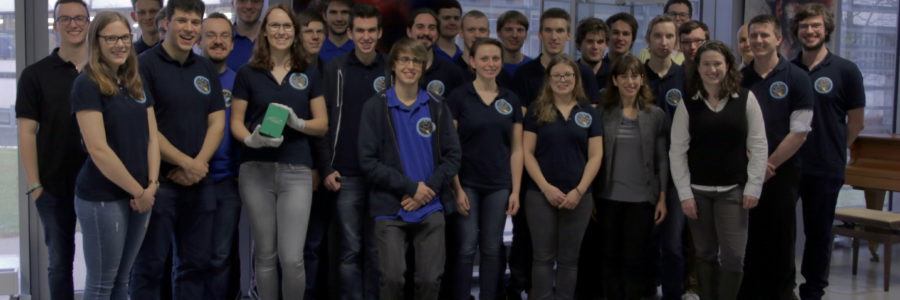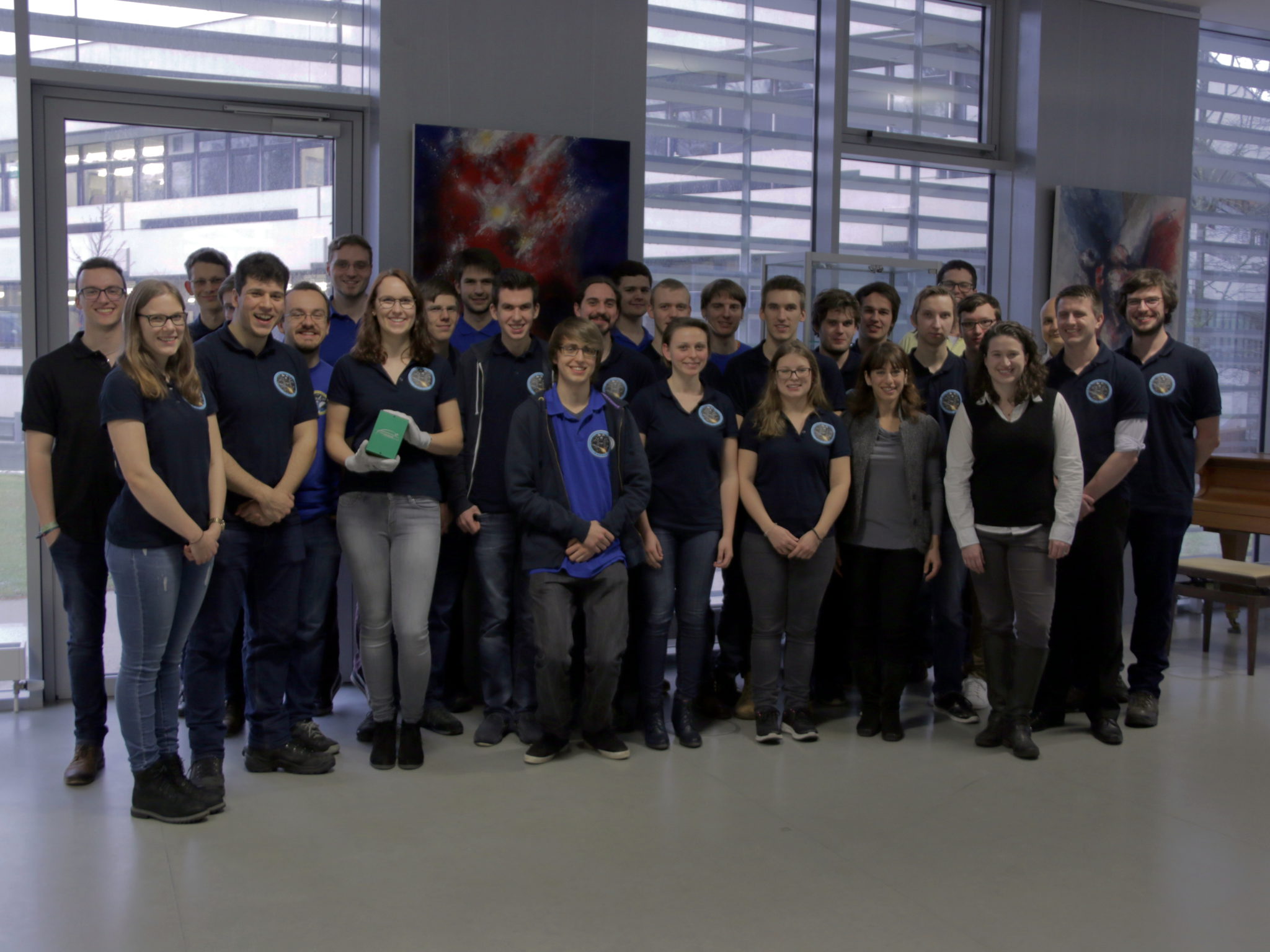
The Überflieger project from the DLR includes a visit of three experts from the space companies DreamUp and NanoRacks from the USA for the PAPELL team.
The experts wanted to get to meet the team in person and see how the progress of the experiment was. Further more they needed to make sure, our experiment does in no way harm or influens the crew on the ISS. The experts were satisfied with our progress and PAPELL could match all their restrictions.
Beginning with a short introduction and a brief presentation of our PAPELL experiment, the experts were shown the main components of our experiment and their functionality. This includes the experiment area 2, the actuators for pumping the ferrofluid, the onboard computer with the power supply and several sensors. In order to keep the overview, a complete integration was not done and insted of ferrofluid, collered water was pumped in the presentation. This had no influence for the tests or the functionality of our experiment. Experiment area 1 was due to time aspects not yet ready but this was no problem because the components are simulare to experiment area 2. Further more the injectors of experiment area 2 were not functional because they still have a minor mechanical issue, due to getting stuck in their reservoir. A further iteration to solve this problem is allready ordered and in manufacturing.

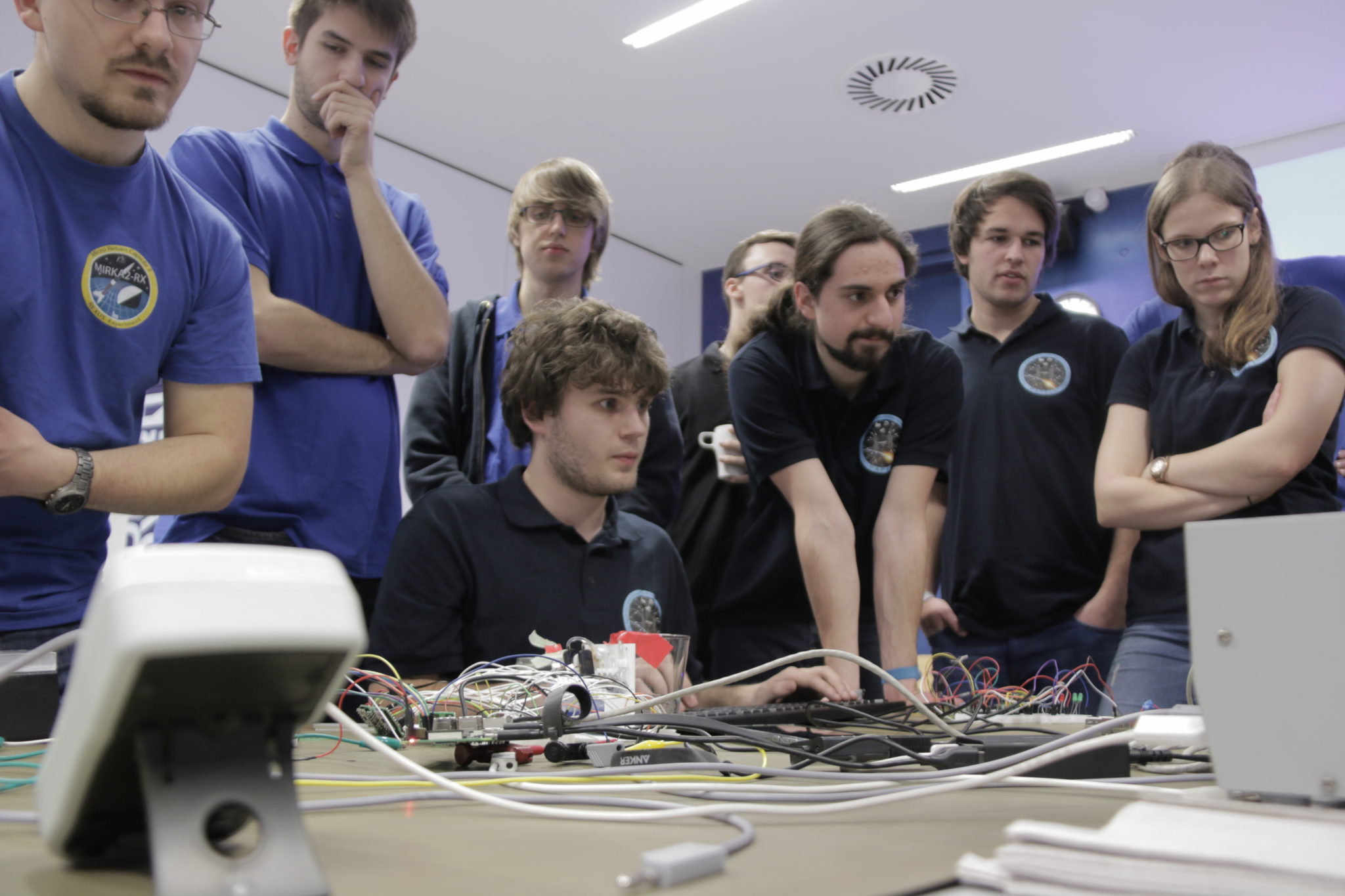

The biggest worry for our guests were the magnetic interferences during our experiment phase, which could compromise the other modules of the ISS. The induced magnetic field of PAPELL stays far below the requested limits of NanoRacks. Including this aspect, there is no further issue in the way for PAPELL to work on the ISS.
The additional tests concluded as expected and bigger problems did not accure. Further more, one big drop of ferrofluid could be transported from one magnet to the next without any leftovers on the surface. This is shown in the video.
Our guests were also welcomed by our head of the Institute for Space Systems, Prof. Fasoulas. The visit was concluded with a guided tour through the institute and its labratories by Mr. Herdrich.
The day was finalizied with a dinner in citycenter which the experts and many team members participated.
